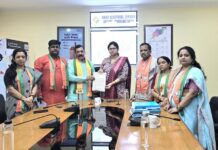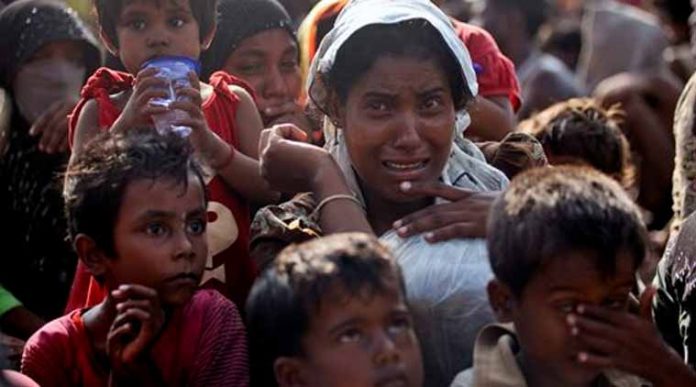By Our Correspondent
NEW DELHI: The United Nations Special Rapporteur on the situation of human rights in Myanmar, Yanghee Lee, is undertaking a visit to various locations of the Rohingya refugees in Cox’s Bazar, Bangladesh from today i.e. 20 February to 23 February 2016 to examine human rights violations on the Rohingyas.
Asian Centre for Human Rights (ACHR) in its submission, “Rohingya refugees of Myanmar: Bangladesh is facilitating ethnic cleansing of the Rohingyas in Arakan and indigenous Jumma peoples in the CHTs by using the fleeing Rohingyas”, to the Special Rapporteur stated that while gross human rights violations against the Rohingyas must be investigated but the UN cannot be oblivious to the Buddhists of the Chittagong Hill Tracts (CHTs) being made into a minority in their own land by the permanent settlement of the Rohingya refugees who belong to the same stock of people as the majority Muslim population of Bangladesh.
The Rohingya refugees have already become majority in Bandarban district and have been involved in grabbing the lands of indigenous Buddhists and attacks on Buddhists monks in the CHTs and launching insurgency in Arakan from the CHTs.
The researchers of after visiting Rohingya refugees who had taken shelter under Ukhia Subdivision under Cox’s Bazaar from 13th to 15th January 2017 found that they are living in self-made make shift camps and have no intention to return to Myanmar in the light of the gross human rights violations and absolute lack of guarantees against non-repetition of the violations.
At the same time, the Government of Bangladesh is neither registering them nor issuing identity cards to record their origin which is indispensable for repatriation to Myanmar. There is no intention to repatriate the Rohingya refugees.
Over 600,000 Rohingya refugees including 65,000 since October 2016 have sought refuge in Bangladesh since 1992 and in December 2016, Myanmar offered to accept the return of fewer than 2,500 Rohingyas.
“That the national survey of the Rohingya refugees conducted by the Government of Bangladesh from 2 to 14 June 2016 focused all the three districts of the CHTs out of the six districts i.e. Cox’s Bazar, Rangamati, Bandarban, Khagrachari, Chittagong and Patuakhali confirms that that the Rohingya refugees mainly settled in the CHTs.
Out of these districts, Rangamati, Bandarban, Khagrachari are part of the CHTs Regional Council while two remaining districts i.e. Cox’s Bazaar and Chittagong are bordering districts of the CHTs region.” – stated Paritosh Chakma, Director of the ACHR.
The influx of the Rohingya refugees started in 1992 and as per the census of Bangladesh, the population of Bandarban district increased from 157,301 persons as per 1991 census to 298,120 persons as per 2001 census i.e. an increase of 90% against decadal growth rate of 17% in entire Bangladesh during the same period.
The Rohingyas have already become majority in Bandarban district and further settled in Rangamati and Khagrachari districts of the CHTs.
“Few in the international community recognize that the Rohingya refugees who are subjected to gross human rights violations by the Rakhine in Arakan have become defacto rulers over the indigenous Marmas of the ethnic Rakhine origin in Bandarban district with wider implications for indigenous Jumma peoples of the CHTs.”- further stated Chakma.
ACHR further informed the Special Rapporteur that the policy of the Government of Bangladesh to use the Rohingya refugees for settlement in the CHTs and absorbing over half a million Rohingya refugees has actually acted as an encouragement to the Government of Myanmar to expel more Rohingyas from Arakan province.
The Myanmar Army had expelled over 300,000 Indian origin people following the coup d’etat by General Ne Win in 1962. With over one million Rohingyas already expelled since 1992, the Myanmar Army believes that they can actually expel all the remaining Rohingyas and get away with ethnic cleansing.
“If 65,000 Rohingya have sought shelter since 9th October 2016, the Myanmar Army will require less than 20 odd attacks similar to the attack on the Myanmar Border Police to cleanse Arakan of the remaining one million Rohingyas.”- also stated Chakma.
ACHR in its submission warned that the attacks by the Rohingya armed groups will not only intensify but become deadlier while Myanmar Army shall continue to use disproportionate force against the Rohingya armed groups without making any distinction between combatants and civilians as it did to other ethnic insurgents.
ACHR urged the Special Rapporteur on Myanmar for abandoning “Symptomatic Approach” to the Rohingya refugee crisis and broadening the view beyond the Rohingya/Arakan tunnel and ensure that while the Rohingya refugees must be given all the protection, they must not be allowed to violate the rights of indigenous peoples of the CHTs.
The Rohingya will flee to escape but if the CHTs is used to be the dumping ground of the Rohingyas, both Myanmar and Bangladesh will be successful to cleanse Arakan of the Rohingyas and the CHTs of the indigenous peoples, in not too distant future.






























